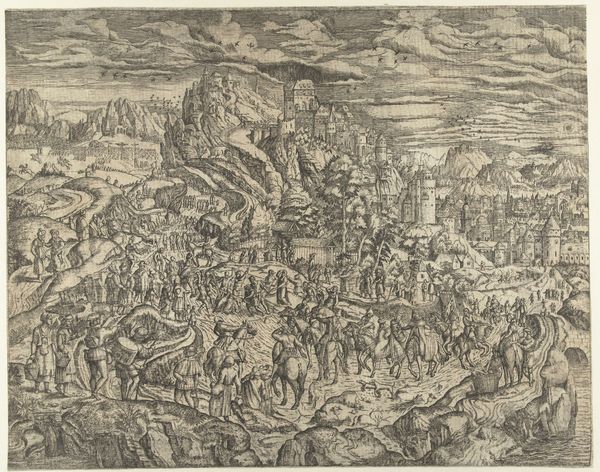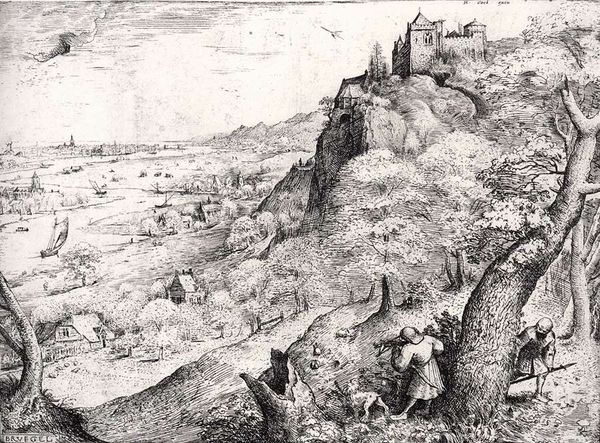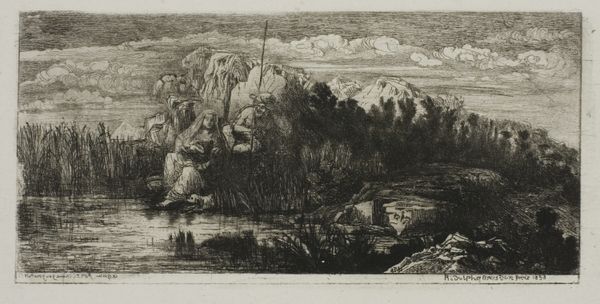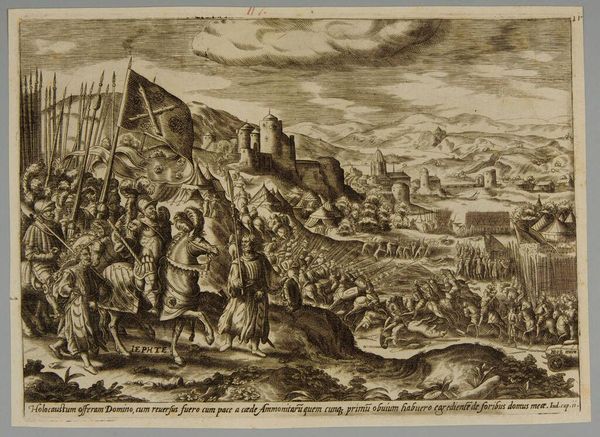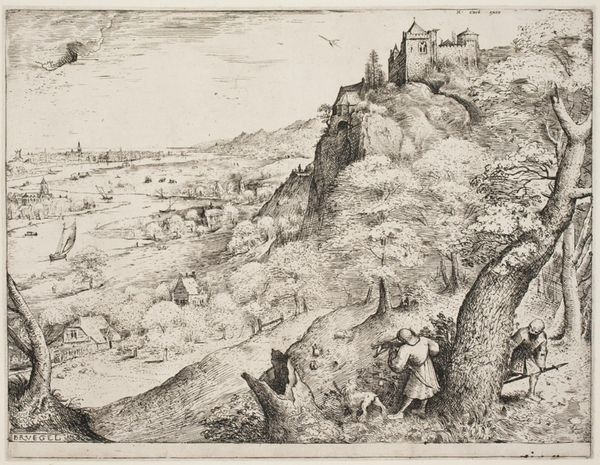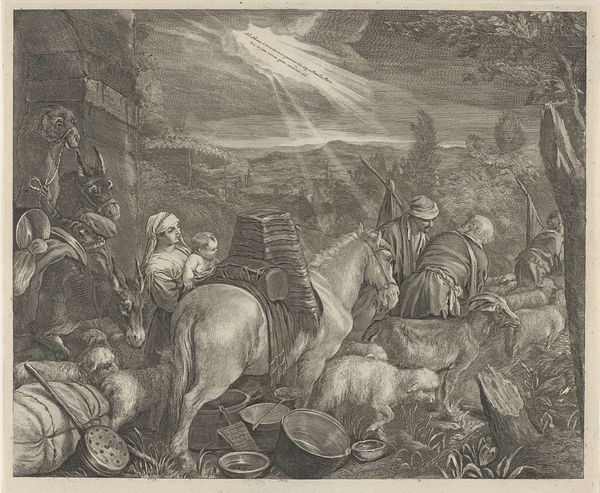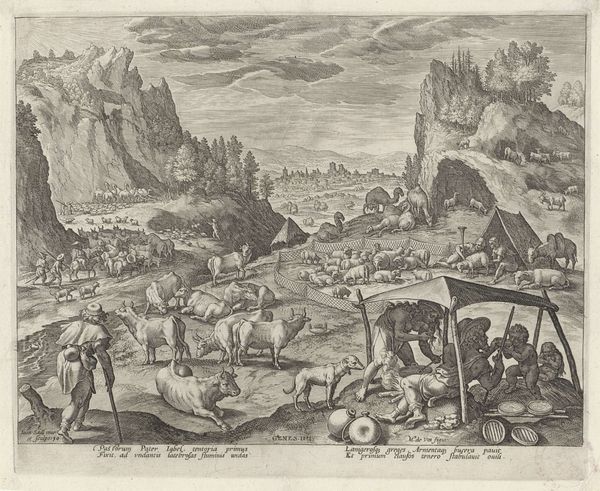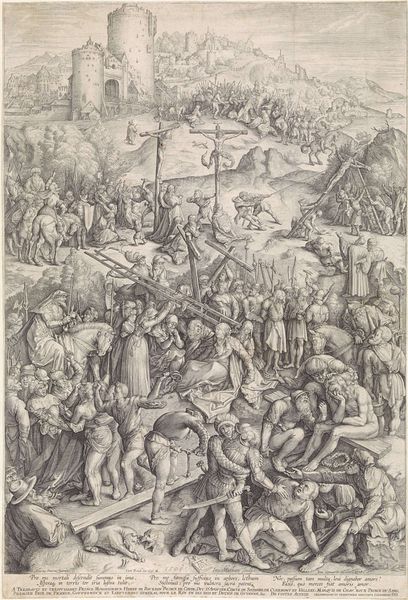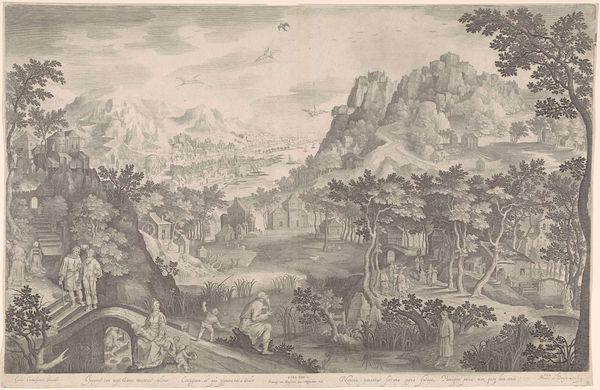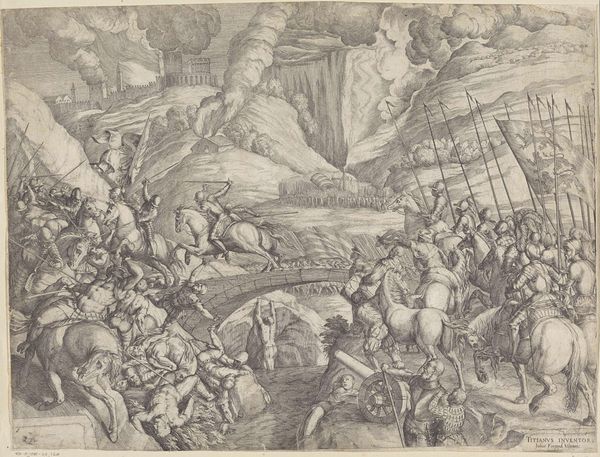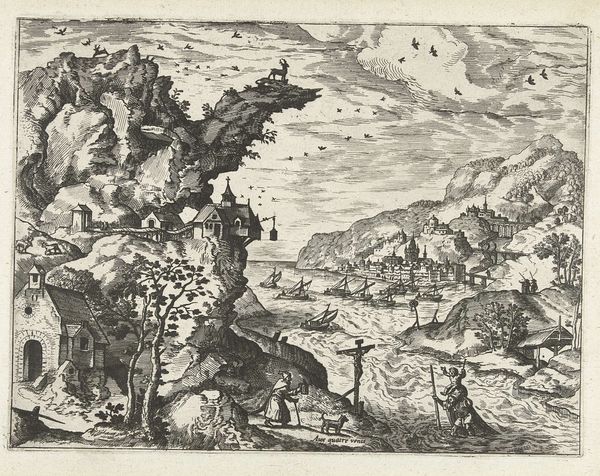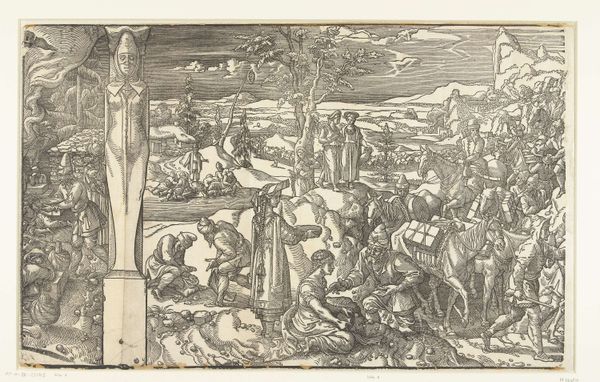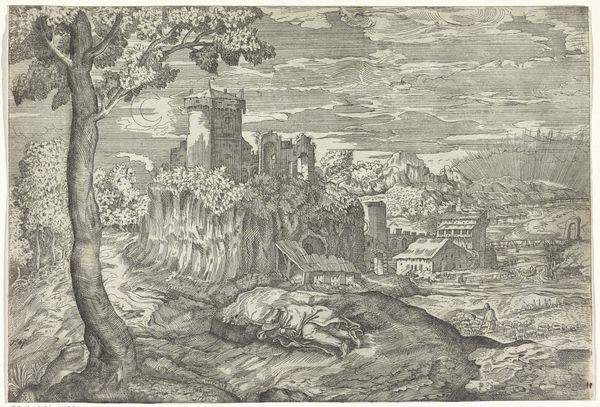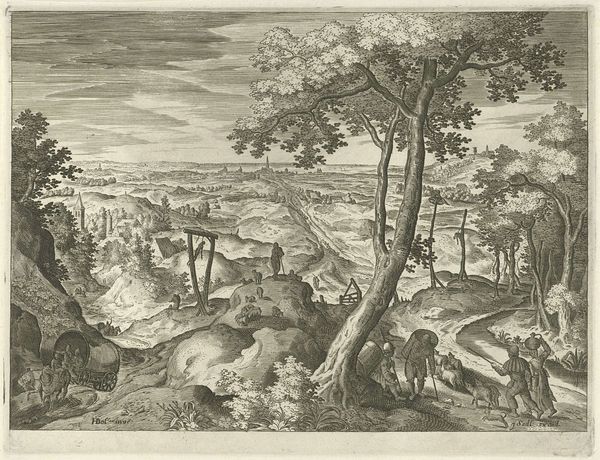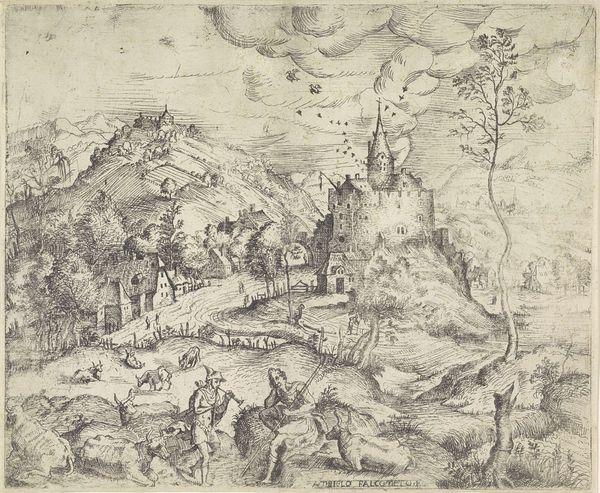
panel, oil-paint
#
panel
#
narrative-art
#
oil-paint
#
landscape
#
figuration
#
oil painting
#
christianity
#
history-painting
#
northern-renaissance
#
christ
Dimensions: 33.5 x 55.5 cm
Copyright: Public domain
Curator: Look at this scene, rendered with such dizzying detail. This is Pieter Bruegel the Elder's "The Suicide of Saul," painted in 1562. Editor: It's wild, isn’t it? Like looking into a chaotic anthill of tiny people and pointy sticks, all crammed onto this little wooden panel. It almost makes me claustrophobic, and a little queasy! Curator: Indeed. Bruegel’s piece speaks volumes about the Northern Renaissance, its obsession with detail, and its fascination with both biblical narrative and everyday life. Let's delve a bit deeper into how this combination functions... Editor: It's fascinating to me how this grand biblical story sort of gets swallowed up by the vastness of the landscape. It's like Saul's personal tragedy is almost… insignificant against that epic backdrop, it diminishes his agency, don't you think? Curator: Precisely. This relates to larger debates on free will versus determinism prevalent at the time. By dwarfing the figure of Saul within a landscape teeming with conflict and detail, Bruegel reflects a shift toward understanding individuals within broader social, political, and even cosmic structures. This battle becomes an allegory for universal struggles of power and faith. Editor: And that apocalyptic fire blazing in the distance doesn’t help matters much. A tiny human drama against an existential threat. It almost feels comical, if it weren't so grim. Bruegel really liked getting meta, didn't he? He makes me consider the insignificance of individual actions amidst grand events, or, who knows? Maybe the utter madness of war itself… Curator: Absolutely, his work forces a re-evaluation of our traditional understanding of heroes and narratives. Through visual strategies, Bruegel creates a discourse questioning who holds agency, who suffers the most, and what significance is even achievable within an inescapable sociopolitical situation. Editor: Well, thinking about "The Suicide of Saul" I can't help but feel both overwhelmed and strangely comforted. Its bleakness has its own sort of odd charm, as if Bruegel winks through history, inviting us to contemplate everything being simultaneously tragic and beautiful. Curator: An interesting contradiction that resonates through the ages, doesn't it? By situating Saul's story in this complex and expansive setting, the work offers a potent visual argument, prompting us to question individual fate within the inescapable tide of history.
Comments
No comments
Be the first to comment and join the conversation on the ultimate creative platform.
